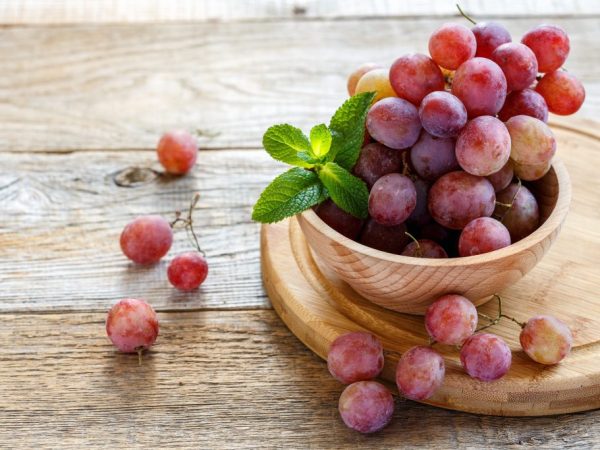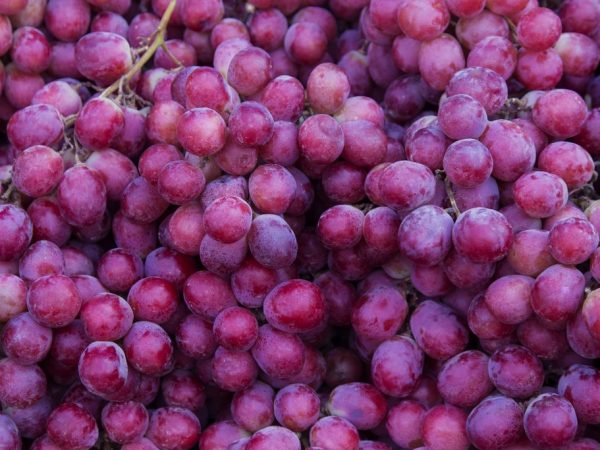Grape acidity level
To make a good grape drink, the acidity of the grapes is measured. Further, they work with the acidity index and create high quality wines.

Grape acidity level
Amount of acid
Acids in grapes are abundant. The berries are dominated by two of them:
- Wine. Its formula is C4H6O6. It is the most active substance in berries that can only be obtained from grapes. Its amount is 95% of that of other acids. For wine, the level of content from 6 (sometimes 7) to 8 g per 1 liter is considered the norm. Grape acid creates a pleasant taste in the drink. The higher its content in grapes, the better the drink will come out of it.
- Apple is not such a necessary substance for winemaking. In unripe fruits, its amount reaches up to 15 g per 1 kg of berries. If there is a lot of it in grapes, its amount is reduced, as it creates difficulties in the preparation of the product. Gives the taste of green apples to wine.
Additional substances, the content of which in fruits is insignificant:
- acetic;
- lemon;
- amber;
- oxalic.
After fermentation processes, vanillic, hydroxycinnamic, gallic, and lilac acids are formed in drinks.
These substances are essential for the winemaking process. Each of them has its own function. By adjusting the amount of a substance, a certain taste of the drink is obtained.
What determines the level of acidity
The malic acid level depends on the following factors:
- Berry variety.
- Berry ripeness.
- In cool climates, the content in fruits is increased.
- When exposed to the sun, it undergoes an oxidation process and turns into milder forms.
- The fermentation process contributes to a decrease in its level.
In ripe fruits, the amount of malic acid is normal - 2 g per 1 kg of berries. This is an acceptable indicator for grape varieties that do not initially contain a lot of substance. These varieties include Bastardo, Cabernet, Ruby Magaracha.
Tartaric acid has a beneficial effect on the taste of the future drink. The more it is, the tastier it will turn out. The high content of the substance (about 5 g per 1 kg) in the varieties Feteaska, Aligote. In red varieties, the malic acid content decreases after the fermentation and fermentation process.
In the southern regions, fruits with a low content of it grow, and in the northern regions - with a high one. This is also taken into account in the winemaking process: in the south, the acidity of local wines is increased from 4, 6 pH to normal.
Functions of acids

The acidity level of berries affects the storage of drinks
These substances are important for the processing of grapes and the production of food products from it: juice, wine, champagne. The acid is capable of:
- Reduce the formation of bacteria.
- Slow down the oxidation process of products.
- Give drinks an invigorating taste and freshness.
- Increase the shelf life of the drink.
Acidity and sugar content
Depending on the beverage, acid or sugar may predominate in it. High acidity in the process of fruit ripening turns into sugar content. An abundant amount of sweetness is also undesirable for him, as is excess acidity.
For balance, depending on the sugar content, the amount of these substances is reduced or increased in an artificial way. To add sourness, citric or tartaric acid is added.
In different wine materials, the percentage of sugar content is different:
- cognac 15-17%;
- champagne 17-20%;
- red dry 18-22%;
- Kakhetian more than 22%.
Depending on the sugar content and acidity, the taste of the drink is formed. This is important for the correct combination of the drink with food and food. Acidic wines are not recommended for use with salty foods, as they block the ability of the taste buds to sense salt in them.
And sweet species, on the contrary, are combined with salty dishes. Also, the serving temperature is important for the correct use of the drink.
Conclusion
There are many acids in the grape product, but tartaric and malic acids prevail. Their level depends on the variety of berries, the region of growth, the stage of maturity and the stage of preparation of wine drinks. Sugar content is also considered an important indicator. Depending on the type of drink, the parameters of the substances are regulated in an artificial way.


